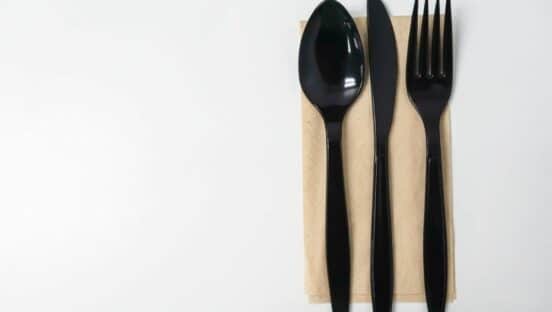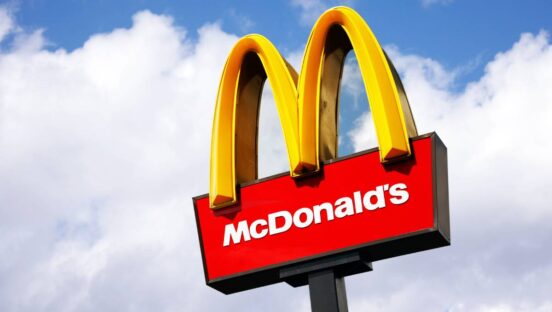It’s hard to imagine a time before traditional plastics became commonplace for many single-use food packaging and food-contact applications. It’s even harder to imagine a time without them using current materials, but that day is coming—not immediately, but sooner than some might think.
As cities and states begin to examine their plastic consumption and put in place new restrictions on items like bags, cups, lids, stirrers and straws, biobased and biodegradable products are coming into their own as a viable alternative to traditional plastics for many applications. And last year, the Biden administration announced an ambitious plan to replace 90 percent of fossil fuel-based plastics with biobased materials over the next two decades.
In food service, traditional plastics have been the dominant material used in packaging applications since the 1970s. It’s easy to understand why. Traditional thermoplastics work extremely well for their intended purpose; they can be made sturdy enough to hold food for long periods on a shelf or shorter periods in transit, and have sufficient heat deflection temperatures (HDT), so they hold shape even if the food or beverage inside is extremely hot. On top of that, they’re inexpensive, easily manufactured, and versatile. Traditional plastic materials have revolutionized packaging, making it light, low cost and very good at protecting and delivering products.
Despite the conveniences of traditional plastics, it’s impossible to overlook their ever-growing adverse environmental impacts, from accumulation in the oceans to microplastics showing up in our soil and drinking water. It’s crucial that we find a new way forward that turns the tide on plastic pollution while allowing food service items, food packaging and other plastic dependent industries to continue functioning at the same level of efficiency and safety as today.
In recent years, the bioplastics industry has made strides toward becoming more common for a variety of food-related applications by offering the same performance, efficiency, and functionality as traditional plastic packaging materials. But it’s a slow process, since there are thousands of types of food packaging products, with many needing highly customized specifications to keep foods stable and safe on their way to the consumer.
For the last five years, polypropylene (PP) has been the compound of choice for straws, while high-impact polystyrene (HIPS) dominates cutlery. Cup lids continue to either be HIPS or polyethylene terephthalate (PET) in most cases. These fossil fuel-derived materials were chosen largely for cost and performance reasons, one of which is temperature resistance, an important factor when serving and consuming food. When hot food or liquid encounters packaging, it can cause it to shrink or change shape if it has a HDT below the temperature of the food item.
Two bioplastic varieties, polyhydroxyalkanoates (PHA) and polylactic acid (PLA), have emerged in several food-related applications. PLA, made from renewable biological sources such as corn, sugarcane or cassava, came onto the market many years ago. While it’s far better than traditional plastics from an environmental perspective, by itself PLA has limited utility in food packaging because of its low HDT of approximately 55º Celsius, which is well below the boiling point of water and in some cases shipping conditions. Hot coffee or hot tea, for example, are typically served at a temperature closer to ~95º Celsius.
Enter new PHA materials, which have only become commercially available in the last few years but offer a major step forward. PHAs are also derived from biological sources (such as canola oil) through feeding microbes which make the naturally occurring biopolymer, and offer a higher HDT than PLA, so it can easily hold hot food and beverages without softening. That’s especially important to food service vendors who want to offer compostable straws, stirrers, lids and cutlery but don’t want two sets of product inventories for hot and cold uses.
While PLA and PHA both come from natural sources, they break down much differently after use, and this is one area where PHA excels. While PLA breaks down far faster than traditional plastics, it requires a wet, warm environment to do so quickly, which under ambient conditions isn’t always going to be possible.
PHA, on the other hand, is a naturally occurring molecular structure made by microbes and plants, so it’s inherently biodegradable in all natural environments. Like any other biodegradable substance, physical aspects such as thickness and surface area factor into how quickly a PHA-based product will break down. A thick piece of cutlery might take several times longer than a straw to biodegrade under the same conditions, but regardless, it’s still a fraction of the time it would take for PP, PET, HIPS or other traditional plastics to biodegrade. It is also important to note that PHA continues to break down until it is fully consumed by microbes. In the end, there are no traces of the material left in the environment.
According to a recent Michigan State University study, a transition from traditional plastics to PHA biodegradable materials would result in half as much plastic pollution in the ocean within 18 years because of the inherent marine biodegradability of PHAs. Like leaves in a backyard in the fall, PHA-based materials don’t keep accumulating year after year. Some break down faster than others, but they all biodegrade and return to nature to be reused by the plants and microbes that made them in the first place.
Innovations underway right now will soon enable PHA use in new food packaging applications. One example is replacing the thin layer of polyethylene that’s used to cover the inside of paper cups and wraps, making them watertight but also preventing them from composting. Using a newly developed process, a water-based PHA coating can be applied onto the paper, then run through a curing process, creating an impenetrable barrier layer that’s thin enough to make the cost financially feasible, suitable for sealing and protection from liquids, and completely compostable in industrial and home systems.
Also currently in development is PHA-based flexible packaging, such as the bags used for many types of candy and dry snacks. Though this packaging seems simple, it’s actually made of several extremely thin layers that can vary based on the requirements of the product inside — Skittles, for instance, require an entirely different level of oxygen permeability and moisture barrier than Doritos. We’re getting closer to developing the required technical performance for many flexible food packaging uses. For example, my company, Danimer Scientific, recently helped launch a new fresh carrot package with Bolthouse Farms launching at Meijer stores soon.
Many more biobased and biodegradable food packaging applications are technically feasible, but require time and resources to develop, although for some converting companies there isn’t currently a strong financial incentive to do so. Yet, large food product manufacturers and many converters increasingly see the potential of PHAs along with other compostable packaging for food applications and are beginning to put larger resources into development efforts.
Bioplastics are already a viable and great-performing option for many food-service applications such as straws, cutlery, paper coatings and lids, and should continue to find new growth as the bioplastics industry achieves world-class scale. As awareness about the potential of PHA biopolymers blooms, we expect to see continued support for overcoming existing technical hurdles and devising new, environmentally sustainable packaging solutions.
Keith Edwards is vice president of business development at Danimer Scientific, a pioneer in creating more sustainable, more natural ways to make bio-plastic products. For more than a decade, its renewable and sustainable biopolymers have helped create bio-plastic products that are biodegradable and compostable and return to nature instead of polluting our lands and waters.














